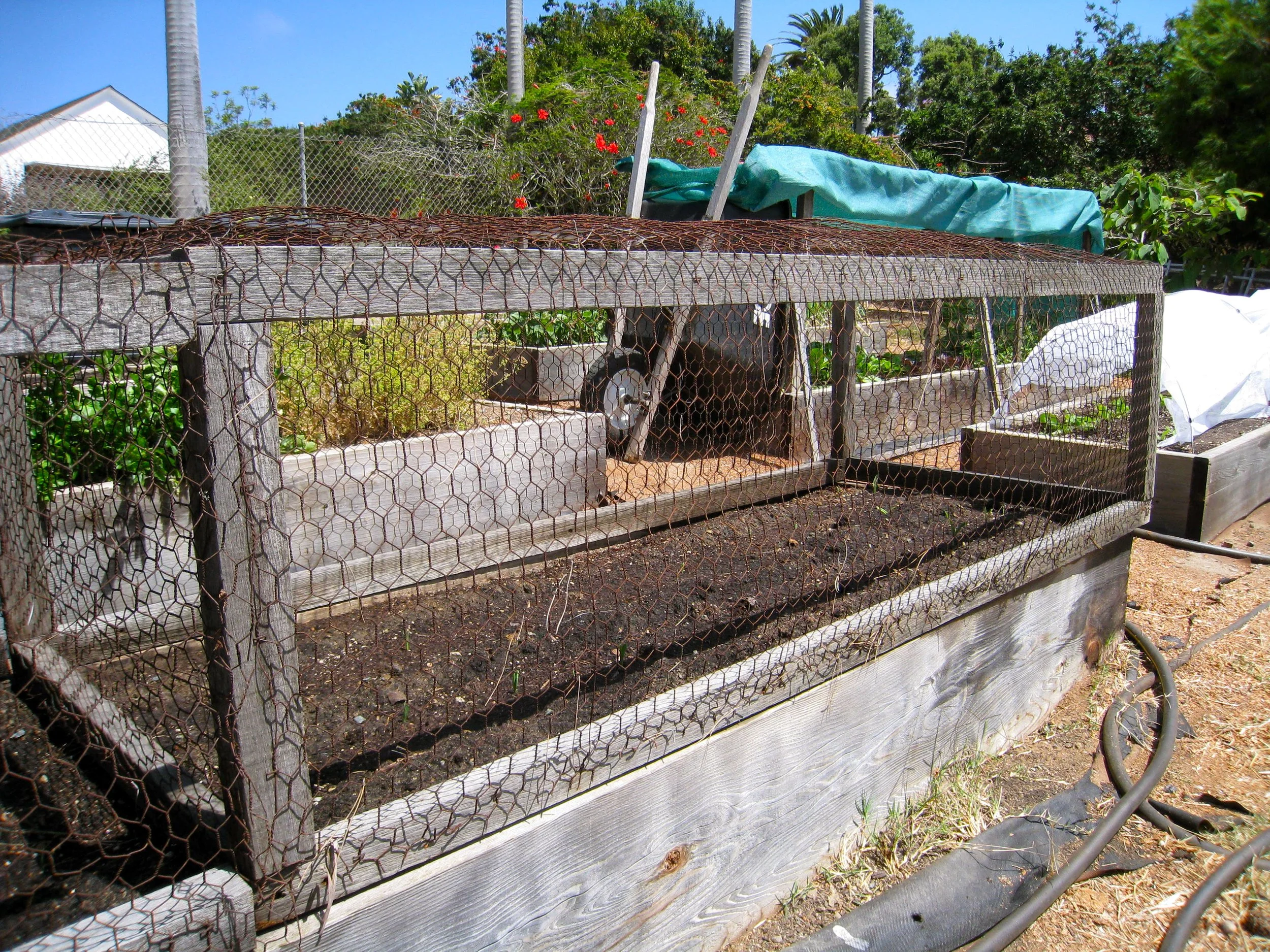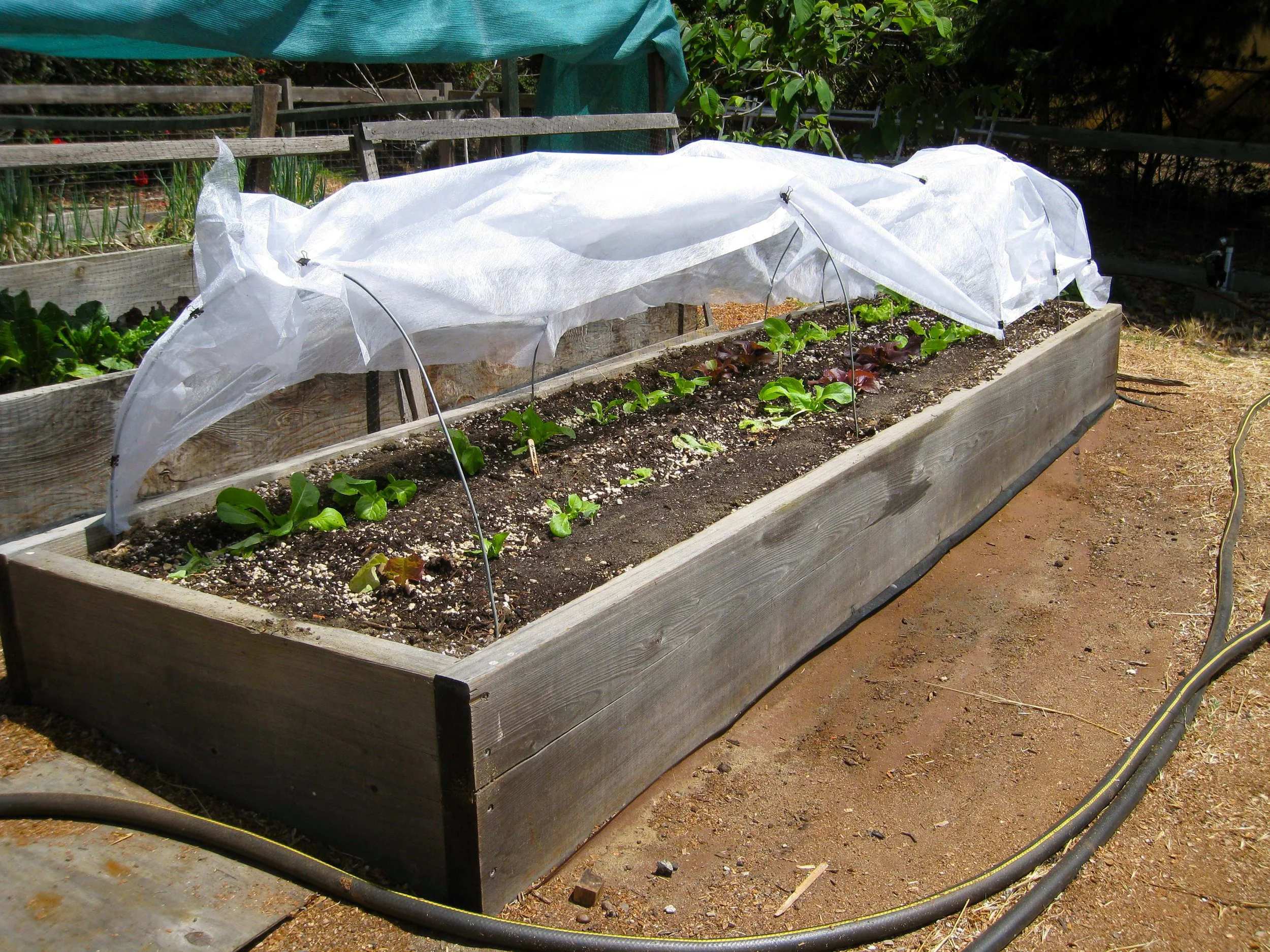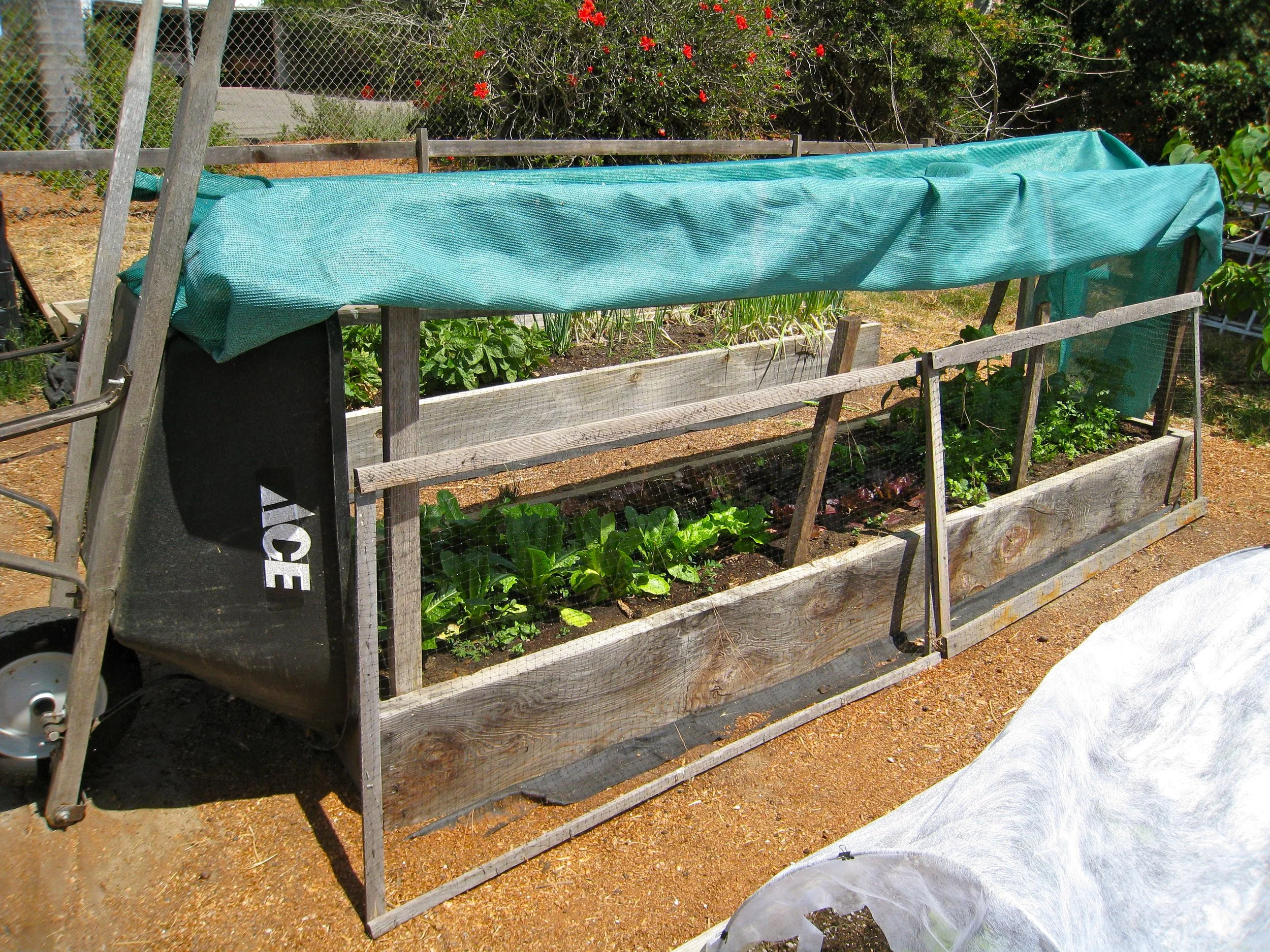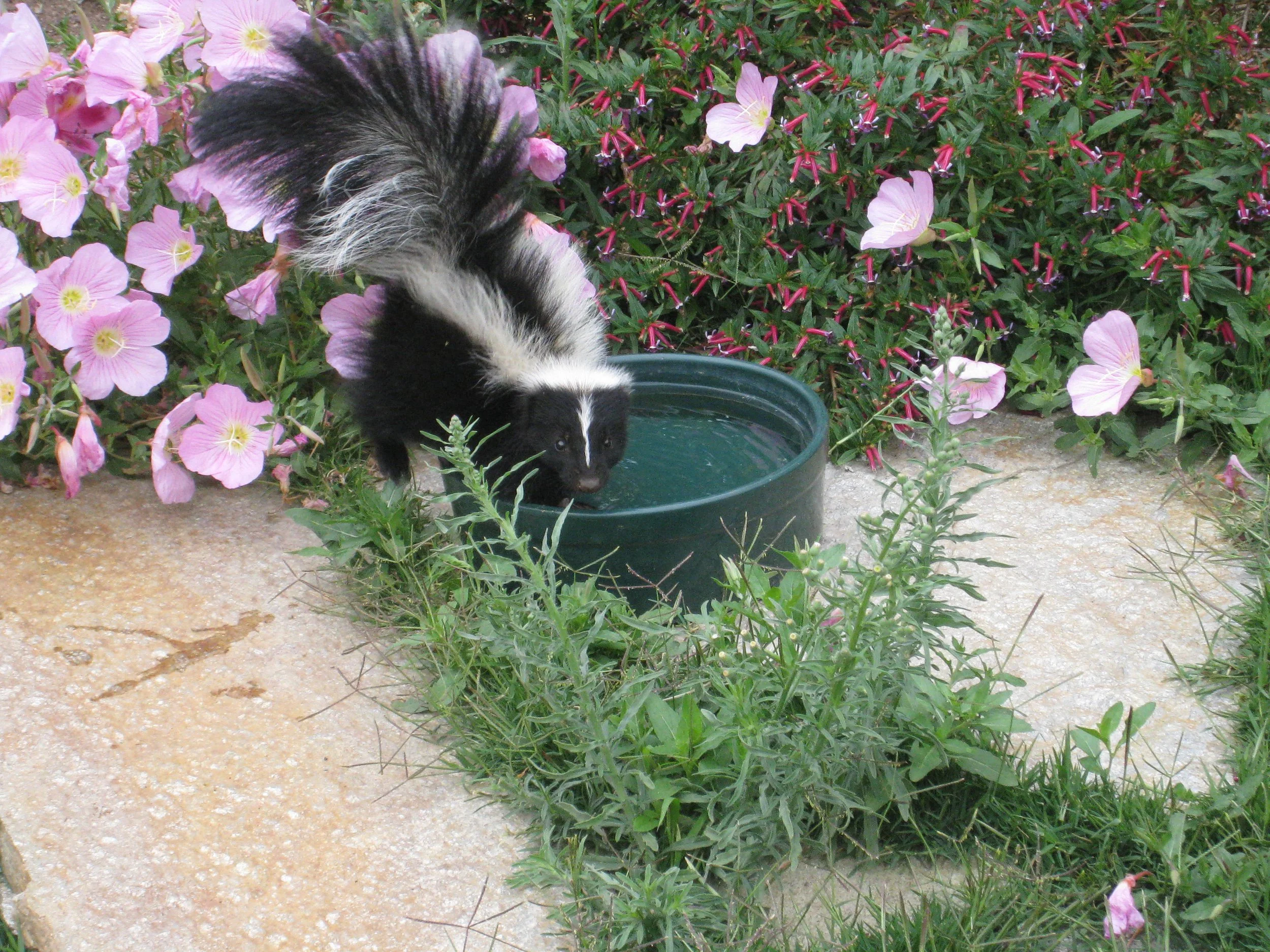In My Garden: Critters, Part II
Above: Screened frame to keep birds away from small seedlings.
Learning to get along with nature is a part of urban life and the more you can prevent conflict with the wild creatures we all share our yards with, the happier we all will be. Below are a few things I have tried that have been successful in keeping me and the wildlife in harmony with each other.
Most of the birds in my vegetable garden provide a really good service. They are mostly after the insects and worms that eat and destroy my lettuce and other crops in my garden. It's a win win situation for us. The birds eat the insects to their hearts content, and my garden is pest free without my having to do much of anything else.
Young crows, on the other hand, are the juvenile delinquents of the bird world, and will pull out my young vegetables and markers just for the fun of it. The other day I came out to the garden to find about ten little radishes, not nearly ready to harvest, pulled out and laying in the dirt. Even though they are troublesome little guys, I still really like crows, and will write a whole blog on them one of these days.
Because of the crows' mischievous nature I use screen frames and/or light weight row covers on newly planted vegetables. The screen frame is a simple wood frame the size of your planted row or raised bed with screen stapled to it. The lightweight row covers consist of 1/8" metal U's (turned upside down and pushed into the earth every three feet) that I clip the row cover to (Gardens Alive at gardensalive.com sells the row cover). The lightweight row covers protect the new and more delicate plants such as lettuce, arugula and cilantro, from too much sun in the summer and the cold during winter nights. Once your crop is half grown you can remove the covers. The row covers also help prevent insects spreading to your new plants.
As an alternate to the fenced garden for your existing or new raised beds or garden here is another suggestion. Remove the soil out by about 12" to 18" and lay the same galvanized 1/2" mesh wire fencing into the recessed areas and allow 2" to 4" of that fencing wire to stay above ground on all edges. Then fill the dirt back into your raised bed or garden plot. No one will be able to dig underneath. You can also make a wood frame the same dimensions as your raised bed, staple the galvanized 1/2" mesh wire fencing to it, and place it over your freshly planted seeds. As the seed begin to sprout you can raise up the frame a little by placing small wood blocks underneath it. Don't raise it too high or critters will be able to get in. Once the seedlings have grown, you can remove the frame.
If you have a small fenced yard, block any holes dug under the fence and check regularly. If the fence is chain link use 1/2" wire mesh fencing about two feet high attached to the base of the fence so that rabbits can't get through. You would be surprised the tiny holes a full grown rabbit can get through. I have seen rabbits in my yard hop right through my chain link fence like there was nothing there. If you have someone to help you dig around the fence base, dig about 18 inches deep and place the same galvanized mesh fencing overlapping the upper fencing by six inches. This will prevent wild critters from digging under the fence and stop gophers from coming into the yard.
If you have a larger yard consider installing a 24" to 30" high rabbit proof fence around the garden which can be made very attractive with an arched gate, etc. When you install the rabbit fencing dig the same 18 inch trench with mesh fencing. This will keep the gophers and other small animals out, as they won't be able to dig underneath it.
I have tried many different ways to keep the peace between me and the wildlife who live in or near my yard. Above are some of the easiest and most effective ways I have found. I don't believe in trapping or poisoning animals, rather I believe we can all live peacefully together, even with those rascal crows! And don't forget to leave a bowl of fresh water every day for the wildlife out in your yard, especially during the summer. I want to keep the animals out of my vegetable garden and away from stealing all my fruit on my fruit trees, but they are welcome to anything that falls on the ground outside of the barriers and are welcome to share the yard with me. After all, they are a part of our urban life, and as far as I am concerned they do more to help my yard than to harm it. And besides that, they add a spark of life to our otherwise urbanized landscape.
Above: Lightweight row covers
Above: You can open the row covering to let some sun in during the day, if needed.
Above: Alternative to fenced yard, simple frame with wire mesh to protect seedlings.
Above: Another easy fix - metal "U's" with strings attached. The birds won't fly into this.
Above: Wood frames with wire mesh, greenhouse cloth for the top, and a wheelbarrow on one side is an easy-to-assemble barricade to protect your crops.
Above: A young skunk at one of the two water bowls I keep full of fresh water every day.







